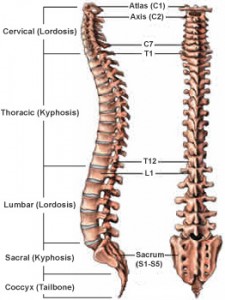Experiences with back pain can be very complicated. They are often difficult to diagnose and involve a variety of treatment options. There are also a lot of myths about back pain out there. Don’t believe everything you hear. Knowing the facts about back pain and back issues can be an effective part of any proper treatment.
Myth 1: Rest is the best way to treat back pain
There are two reasons when back pain is recommended; to reduce pressure on the discs and to stop mechanical stresses that are irritating pain receptors. A short period of bed rest may help acute neck or back pain, but it should be limited to no more than two days. Resting any longer could actually increase your pain. Long-term rest more than 1 or two days can lead to increased pain and other issues including muscle atrophy, cardiopulmonary deconditioning, bone mineral loss, and risk of blood clots. For most back and neck conditions, physical therapy and light active exercise can help relieve pain.
Myth 2: Your spine is fragile and easily injured
Your spine and its surrounding muscles, tendons, and ligaments comprise a well-designed structure. This structure provides a lot of strength, flexibility, and support for your spine. Daily stretching, muscle strengthening, and aerobic exercise will help keep your spine in top shape, even if you have a spinal disorder. There are exceptions, like an unstable spinal fracture, but typically you don’t need to worry that your spine is too fragile for spine-friendly activities. However, there are activities that can harm your spine. These include poor posture and body mechanics, smoking, lack of sleep and poor nutrition.
Myth 3: If doctors can not find a specific problem, the pain must be psychological.
Even if your physician is not able to find the anatomical cause of your pain, does not mean the pain is psychological. If you have chronic pain, it is important to be proactive and consult with a doctor. Ask a qualified spine specialist to assess persistent back pain. They need to make sure it is not a tumor or infection. Most cases of back pain do not follow the typical medical approach of specific structural diagnosis and recovery, but the pain is still real. In fact, back pain can take its toll psychologically as well as physically. Psychological factors, like depression and sleeplessness, will need to be included as part of a treatment program for back pain. There are also a variety of non-surgical care options that can alleviate back pain.
Myth 4: My parent(s) had a back or neck condition, so I will as well
There is no genetic predisposition for most back and neck conditions. However, poor lifestyle choices are passed down from generation to generation. It is best to be proactive about protecting your back and neck instead of worrying about genetics. Sitting with good posture and taking proper care of your health are good ways to help prevent back pain. The fact is that approximately eight out of ten people will experience back pain at some point in their lifetime. While there is no genetic disposition, knowing how to prevent and how to properly care for back pain is still an important part of your health.
If you are experiencing back pain, it is important to visit a doctor for proper diagnosis and treatment options. Call the offices of William Capicotto MD, PC to schedule a consultation.




